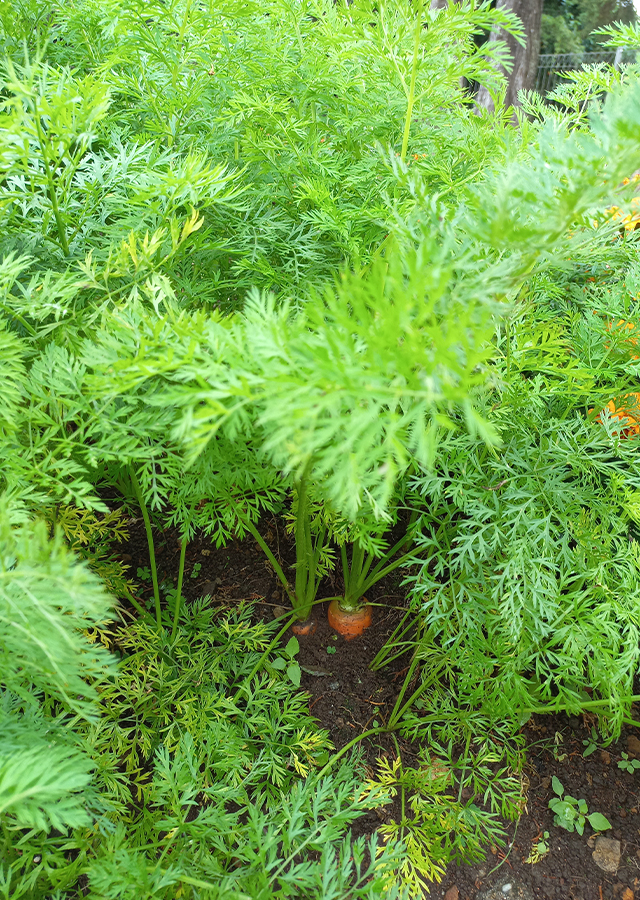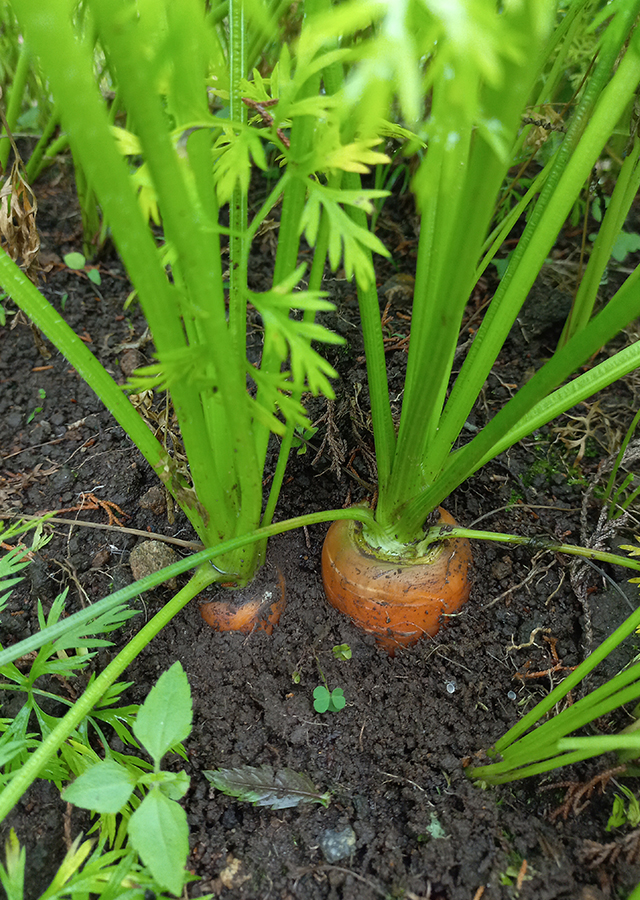Traditional Herbs from Daucus carota
burns
- Take enough fresh carrots.
- Wash with running water until clean then grate.
- Apply grated carrots to the burned skin.
worm_medicine
- Prepare\u00a0fresh carrots as needed.
- Wash until clean.
- Eat carrots directly to treat worms.
What is Daucus carota Looks like??



Parts of Daucus carota that could be used
- Seed
- Root
Daucus carota Distribution
Carrots originate from mainland Asia and Europe. A Soviet botanist, Nikolai Ivanovich, said that the genetic source (germplasm) of carrot plants was found in East Asia and Central Asia which includes the northwestern part of India. Pioneers in carrot cultivation began in areas around the Mediterranean Sea, then spread to Europe, North Africa, South America, North America and Asia. Generally, this plant is cultivated for its use as food, medicine and a source of ingredients. Carrots are a vegetable that is rich in nutrients, both vitamins and minerals, especially the roots which can be consumed fresh as a salad or made into a healthy drink (juice), or cooked as a vegetable, can also be used as an ingredient in making cakes, or as a source of orange dye. yellow in food. The leaves can also be consumed as a vegetable, and the essential oil produced from the seeds can also be used as a flavoring and aromatic agent for food. As a medicinal plant, carrots have traditionally been trusted and used in various countries to treat various health complaints. Among other things, in European traditional medicine, this plant is used to treat jaundice and liver disorders. Carrots are also known to be rich in carotene, which the liver can convert into vitamin A, which can maintain eye health.Agroecology of Daucus carota
Carrots can be found growing in grasslands, along coastal cliffs, sand dunes, scrublands, overgrown grasslands, roadsides, abandoned fields, degraded pastures, and empty lots. This plant is often planted in temperate climates in winter, while carrot centers in Indonesia are generally cultivated in the highlands, at an altitude of between 1,200-1,500 m above sea level. If planted in the lowlands it will only grow tall and not form tubers. The optimum temperature for growth of carrot plants is 15-21 °C. This temperature is suitable for the growth of the roots and upper part of the plant so that the color and shape of the roots can be optimal. Soil that is suitable for growing carrots is soil that is well drained, rich in organic matter and fertile. Sandy loam soil is suitable for cultivating carrots because it is easy for roots to penetrate so that growth can reach optimal length and size. This plant can grow well in soil with a pH of 5-8.
Morphology of Daucus carota
- The taproot is fleshy, thick, straight, conical to cylindrical, the skin and flesh are yellow or orange (most common), the top of the root is often green.
- The stem is very short as if invisible, grooved.", "Compound leaves are double or triple pinnate, the leaflets are lanceolate or striped with a cupped edge attached to the petiole. Grow in a rosette form with long, glabrous, green leaf stalks, with petioles long, often sheathed at the base.
- Compound flowers, inflorescences in the form of compound umbels or double umbrellas. Each umbel consists of 50 or more umbellets, each of which has up to 50 flowers. Small (2 mm in diameter), white, lobed 5 with 2 carpels and 2 pistils.
- Fruit small, ellipsoid or oval-ovate, dry schizocarp (when it falls it divides into 2 parts), the primary ridge is ciliated, the secondary ridge has hooked spines.
- The seeds are small and hairy.
Cultivation of Daucus carota
- Propagation is carried out generatively using seeds.
- It is best to plant the seeds directly by spreading them on the planting land, this is recommended because when using a nursery, usually when moving the seedlings to the planting land there is a lot of root damage resulting in poor plant growth. Seed size Carrots are very small, so to make planting easier the seeds are mixed with clay to form larger granules and are easy to sow.
- Carrot seeds are planted at a planting depth of approximately 3-5 cm, or even planted on the surface of the soil without covering back.
- Carrots can be harvested after 100 days (depending on the variety). Harvesting too late will cause the tubers to become woody.
Daucus carota, more details :
Chemical Content of Daucus carotaEssential oils (pyrrolidine, daucine, mannite, α-pinene, sabinene, germacrene D, geranyl acetate, sedrone S, azarone E), alkaloids, flavonoids, saponins, tannins, polyphenols, glucosides, oxygenated sesquiterpenes (carotol, daucene , trans-α-bergamotene, trans-ß-farnesene, ß-bisabolene, ß-himachalene).
Benefits of Daucus carota
Improves eyesight and skin health (eczema, burns, wounds, ulcers, boils), treats jaundice and liver disorders, cancer, kidney problems, improves urine flow and waste disposal by the kidneys, coughs and chest pain, stomatitis (sores in the mouth) , treats acne and black spots, deworms, colic, dropsy, is considered a soothing tonic, uterine stimulant during labor, uterine pain, chronic diarrhea, is an aphrodisiac, diuretic, carminative, and abortifacient. Has activity as an antioxidant.
Simplisia of Daucus carota
- Prepare enough fresh carrot seeds, wash thoroughly with running water.
- Dry in the sun or in an oven at a temperature\u00a040 \u00b0C\u00a0until the water content\u00a010%.
- Choose using a blender until it becomes powder." ,"Store in a clean, airtight container.
Another Facts for Daucus carota :
Synonym of Daucus carotaCaucalis carota (L.) Crantz
Habitus of Daucus carota
Herb. Annual or biennial herb, between 20-50 cm high at the mature vegetative stage and 120-150 cm when flowering.
Habitat of Daucus carota
- Coast", "Roadside", "Bush Area", "Grassland", "Land
No comments:
Post a Comment